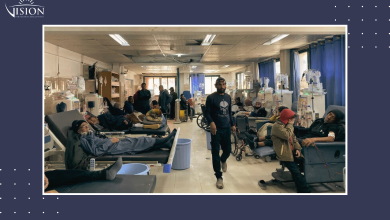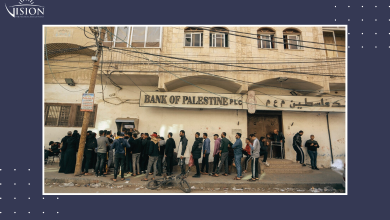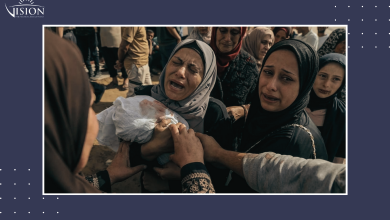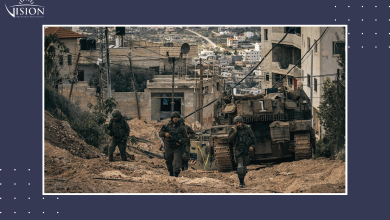Targeting Palestinian Children: The Implications and Strategies of Resistance
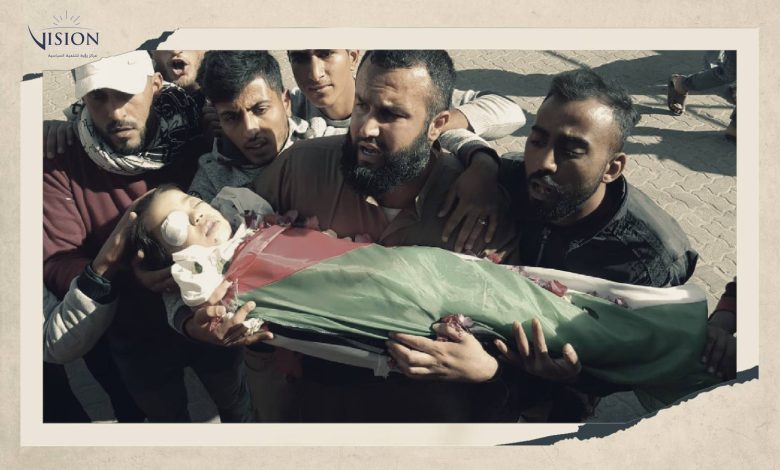
Dr. Samer Najm al-Din[1]
Since the start of 2023, the number of Palestinian martyrs, resulting from direct targeting by occupying forces, has reached around 197 individuals. Among these, 35 are children; 28 have been killed in the West Bank alone. This brings the total number of child martyrs in the West Bank since 2000 to over 553, and prompting the question: is the occupation’s targeting of children a systematic policy, and what are the implications of such targeting?
International regulations accord special protection to children in armed conflicts, making it an obligation for warring parties to avoid harm to them as civilians afforded international protection. These agreements consider any harm inflicted upon children as a crime punishable by law. Such stipulations are laid out in regulations such as the four Geneva Conventions and their two Additional Protocols of 1979, the Convention on the Rights of the Child of 1989 (known as the Tokyo Convention) and its two Optional Protocols. These documents aim to protect children, prohibit harm against them, and provide a roadmap for their treatment during wars.
Nevertheless, the Israeli occupation routinely disregards international legal norms in general, including those related to children. Thus, the ongoing targeting of the younger generation of Palestinians through captivity and murder has become a clear objective on the ground, even if it is not declared in the media.
From a legal perspective, Palestinians have something today that they lacked in the past – a mechanism for legal recourse, embodied by their ability to turn to the International Criminal Court (ICC). Crimes involving the murder of children are considered offenses under the Rome Statute of 1998. Therefore, they can pursue occupying soldiers and their leaders for their crimes against children. This could leverage the ICC Prosecutor’s decision on March 3, 2021, which deemed that Palestinian territories fall under the jurisdiction of the ICC and moved Palestine from the preliminary examination stage to the investigation phase. Thus, the systematic practices of the occupation against children, and the significant increase in the number of martyrs among them since the beginning of this year, call for an analysis within the context of international law and the presumed protection of children.
Forms of Violations:
The “Israeli” violations against Palestinian children are not solely confined to killing. There are other, more commonly employed, forms of infringements, the most salient of which include the detention of children, retaining the bodies of some child martyrs, using children as human shields during incursions into certain areas, among other contraventions. According to statistics from the Global Movement for the Defense of Children in Palestine, over 20 cases of using children as human shields have been documented since 2006 by the occupation soldiers. Furthermore, the number of children who have been detained since 2008 to the end of 2022 exceeds 3546, in addition to dozens of children falling victims to settler assaults in various West Bank governorates.
These violations attest that “Israeli” soldiers pay no heed to any special considerations for the protection and respect of children’s rights. On the contrary, we find an orchestrated policy to infringe upon children’s rights, executed with calculated intention and premeditation by the soldiers.
The Pillars of International Protection for Palestinian Children:
International law grants children special protection and prohibits violation of their rights. It mandates their humane treatment, as well as obliges their special respect (Article 77/1 of the First Additional Protocol to the Geneva Conventions). Indeed, children must be kept as far as possible from target sites and hostile operation centres, as they are civilians (Article 77/2 of the First Additional Protocol to the Geneva Conventions), and their involvement in military operations should be ensured against (Article 38/2 of the 1989 Child Rights Convention), especially given that the involvement of Palestinian children in any combative acts has never been definitively proven. The Palestinian resistance is particularly keen to prevent Palestinians under the age of 15 from participating in any combative acts.
The deliberate targeting and killing of children during war is considered a war crime according to the provisions of Article (8/2/a/1) of the Rome Statute, particularly as the targeting of children falls within a general plan, policy or within the framework of a large-scale operation of committing such crimes, thus constituting organized murder and intended targeting.
Killing children in Gaza through bombing civilian homes is also considered a war crime, which is contrary to the provisions of Article (8/2/a/20) of the Rome Statute. This article prohibits the use of weapons, projectiles, war materials, or methods that cause excessive damage or unnecessary pain, or that are indiscriminate in nature, contrary to international law governing armed conflicts. Furthermore, premeditated murder is considered a crime against humanity according to the provisions of Article (7/1/a) of the Rome Statute. It’s worth noting that Palestine has already acceded to the International Criminal Court as of June 13, 2014, while “Israel” continues to refuse to join the International Criminal Court. This refusal may explain the ease with which “Israeli” soldiers commit crimes against Palestinians.
Determinants of the Escalation in the Targeting of Children:
Notwithstanding the persistent implementation of a ‘child-targeting’ policy by Israel since the inception of the Zionist project in Palestine, it is possible to discern several factors contributing to an upsurge in such targeting recently:
- The Ascendency of Extreme Right Wing to Power: The recent Israeli elections led to the formation of a government coalition under the leadership of Benjamin Netanyahu. This government incorporated extreme right-wing personalities, such as Itamar Ben Gvir as Minister of National Security, and Bezalel Smotrich as Minister of Finance. An aggressive political leadership of this caliber inevitably fuels the brutality and bloodthirstiness of the occupation. Thus, all targets are fair game for the occupying soldiers.
- The Absence of Precision and Caution in Targeting: The objectives of any military ought to be purely military, with a necessary avoidance of civilians and civil institutions. This is a mandatory obligation on combatants, not an optional consideration. However, the random targeting by Israeli soldiers, warplanes, and artillery is evident. Civilian infrastructures, such as homes, schools, hospitals, etc., have become permissible targets for the occupation’s soldiers and aircraft. The targeting of residential buildings populated by civilians was one of the primary objectives of the occupation’s army in its latest war on Gaza. The large number of children in these buildings, coupled with the usage of high-impact, heavy, and large-scale weapons (many of which are internationally prohibited) will inevitably lead to their deaths.
- Religious Backdrop that Permits the Killing of Children: Many Jewish rabbis throughout history have issued decrees allowing the killing of Palestinians without regard for age, sex, or other factors. This includes Rabbis Yitzchak Ginsburgh and Yitzchak Yosef, and can also be found in their books “Torat Hamelech” or “Law of the King. This historical commitment has numerous instances, from the Deir Yassin massacre to the present day. Occupying soldiers face no deterrent in killing children and wartime ethics do not restrain their behavior.
- The War on Gaza: There is no doubt that the war launched by the occupation forces on Gaza, named ‘Operation Arrow and Shield’ by Israel, commenced on May 9, 2023, and the systematic bombing of Palestinian homes under the pretext of the presence of resistance leaders therein, led to a large number of child victims. Comparing the number of child martyrs from 2000 until today, we find that the years in which Israel wages a war on Gaza see a dramatic increase in child martyrs compared to other years. This testifies to the level of criminality that the Israeli war machine employs in its six wars on Gaza.
Mechanisms to Confront the Targeting of Palestinian Children:
Palestinians possess a multiplicity of strategic avenues to combat the targeting of children, with key approaches being as follows:
- One option involves individual or collective recourse to the International Criminal Court (ICC), either independently or via the Palestinian Ministry of Foreign Affairs. The individual prosecution of Israeli soldiers and leaders implicated in the killing of children is likely to yield more impactful results than any other avenue. If the seriousness of this undertaking is evident, it invariably sends a stern warning to Israeli soldiers and leaders. Especially considering the majority of these soldiers hold dual nationalities alongside their Israeli citizenship, it amplifies the possibility of their prosecution for their transgressions, whether in their secondary national jurisdiction or via the ICC. This could in turn limit their capabilities for travel and mobility, potentially deterring soldiers from targeting children if they perceive a risk of prosecution and their sense of security is undermined. Nevertheless, there is a lack of incentive to approach Israeli courts regarding crimes committed by Israeli soldiers, particularly by those who hold Jerusalem identification or Israeli nationality. This is largely due to the perception of the Israeli courts as biased and the fact that most rulings tend to lighten sentences for soldiers or settlers, as evidenced by cases such as the arson of the Dawabsheh family in Duma village, Nablus, and the burning of the child Abu Khdeir on July 2, 2014, in Shuafat, Jerusalem.
- The amplification of media activity around the global phenomenon of child killing is another avenue. This could be achieved via visual reports, documentaries, or translated written reports, especially in the context of an increasingly sympathetic global sentiment towards children and their rights as reflected in international agreements.
- It is crucial that the role of human rights organizations is not confined to documenting violations and publishing reports. They should actively encourage both state and individual recourse to international courts, promote actual prosecution of perpetrators in countries which uphold the principle of universal jurisdiction for international crimes, and sincerely educate victims’ families about their rights within the international framework.
- The resistance can leverage the weapon of threat in case children and their locations in occupied areas, particularly within civilian objects, are targeted. The resistance’s threats are increasingly taken seriously by the occupation and the international community, and the resistance must utilize this fact optimally, declaring that the targeting of children is a red line, crossing which would trigger reprisals against the occupation.
Conclusion:
The escalating targeting of Palestinian children through killing, imprisonment, displacement, and other practices, as well as the policy of early intimidation of children to deter them from future acts of resistance and instill fear within them, is not a mere coincidence. Rather, it is a product of a militaristic state with religious roots, exhibiting extremism in all its actions. Hence, the absence of deterrence contributes to the criminal’s audacity. The blood of the Palestinian child, youth, or woman still lacks a genuine deterrent to prevent its continued spilling. Therefore, a unified Palestinian plan, supported by international backing, is indispensable to expose the crimes of the occupation and prosecute its leaders and soldiers for their crimes against Palestinian children.
[1] – Law Professor at Hebron University.


